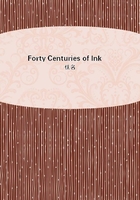
第105章
Middleton, 1860. Joined together one portion of a bank note printed upon one sheet of thin paper and the other part on another; the two were then cemented together by india-rubber, gutta-percha, or other compound.
The interior printing could be seen through its covering sheet, so that the whole device on the note appeared on its face.
Olier, 1861. Employed several layers of paper of various materials and colors; the middle one was colored with a deleble dye, whose color was changed by the application of chemicals to the outer layer.
Olier, 1863. Prepared a paper of three layers of different thicknesses, the central one having an easily removable color, and the external layers were charged with silicate of magnesia or other salt.
Forster and Draper, 1864. Treating paper during or after manufacture with artificial ultramarine and Prussian blue or other metallic compound.
Hayward, 1864. Incorporated threads of fibrous materials of different colors or characters into and among the pulp.
Loewenberg, 1866. Introduced prussiate of potash and oxalic acid or such other alkaline salts or acids into the pulp, in order to indicate fraud in the removal of cancellation stamps or written marks.
Casilear, 1868. Printed numbers on a fugitive ground, tint or color in order to prevent alteration of figures or numbers.
Jameson, 1870. Printed on paper, designs with ferrocyanide of potassium and then soaked the paper when dry in a solution of oxalic acid in alcohol.
Duthie, 1872. Made a ground work of writing ink of different colors by any known means of pen ruling.
Syms, 1876. Produced graduated colored stains, which were made to partially penetrate and spread in the pulp web.
Van Nuys, 1878. Colored the Paper with a pigment and then printed designs with a soluble sulphide.
Casilear, 1878. United two distinctive colored papers, one a fugitive and the other a permanent color.
Hendrichs, 1879. Dipped ordinary paper in an aqueous solution of sulphate of copper and carbonate of ammonia and then added alkaline solutions of cochineal or equivalent coloring matter.
Nowlan, 1884. Backed the ordinary chemical paper with a thin sheet of waterproof paper.
Menzies, 1884. Introduced iodide and iodate of potassium or their equivalents into paper.
Clapp, 1884. Saturated paper with gallo-tanic acid, but the ink used on this paper contained ferri-sesquichloride or other similar preparation of iron.
Hill, 1885. Introduced into paper, ferrocyanide of manganese and hydrated peroxide of iron.
Schreiber, 1885. Colored paper material with indigo and with a subsequent treatment of chromates soluble only in alcohol.
Schreiber, 1885. Treated finished paper with ferric-oxide salts and with ferrocyanides insoluble in water but soluble in acids.
Schlumberger, 1890. Impregnated white paper with a resinated ferrous salt, a resin compound of plumbic ferrocyanide, and a resin compound of ferrocyanide of manganese in combination with a salt of molybdenum and a resin compound of zinc sulphide.
Schlumberger, 1893. Dyed first the splash fibers and mixed them with the paper pulp. Second. He also treated portions of the surface with an alkali, so as to form lines or characters thereon, then immersed the same in a weak acid, in order to produce water-mark lines.
Carvalho, 1894. 1. Charged the paper with bismuth iodide and sodium iodide. 2. Charged the paper with a bismuth salt and iodide of soda in combination with primulin, congo red or other pigment. 3. Charged the paper with a benzidine dye and an alkaline iodide. 1895. Applied a compound, sensitive to ink erasing chemicals, AFTER the writing has been placed on the paper.
Hoskins and Weis, 1895, a safety paper having added thereto a soluble ferrocyanide and a per-salt of iron insoluble in water but decomposable by a weak acid in the presence of a soluble ferrocyanide, as and for the purpose described. (2) A safety paper having added thereto a ferrocyanide soluble in water, a per-salt of iron insoluble in water but easily decomposed by weak acids in the presence of a ferrocyanide soluble in water, and a salt of manganese easily decomposed by alkalis or bleaching agents, substantially as described.
A review of the various processes for treatment of paper in pulp or when finished, demonstrates that time, money and study has been devoted to the production of a REAL safety paper. Some compositions and processes have in a measure been successful. It is found, however, that the ingenuity of those evil-minded persons, to the detection of whose efforts to alter the writing in documents this class of invention has more particularly been directed, finds a ready way of removing in some cases the evidence which the chemical reagent furnishes. This being true most of them have become obsolete, having entirely failed to accomplish the purposes for which they were invented.
There are but three so-called safety papers now on the market, if we exclude those possessing printed designs in fugitive colors.
It is a strange anomaly, nevertheless it is true, that 90 per cent or more of the "raised" checks, notes, or other monetary instruments which were in their original condition written on ordinary or so-called safety paper, never could have been successfully "put through" but for the gross and at times criminal negligence of their writers by the failure to adopt precautions of the very simplest kinds, and thereby avoided placing temptation in the way of many who under other circumstances would never have thought of becoming forgers.
There is no safety paper, safety ink, or mechanical appliance which will prevent the insertion of words or figures before other words or figures if a blank space be left where the forger can place them.